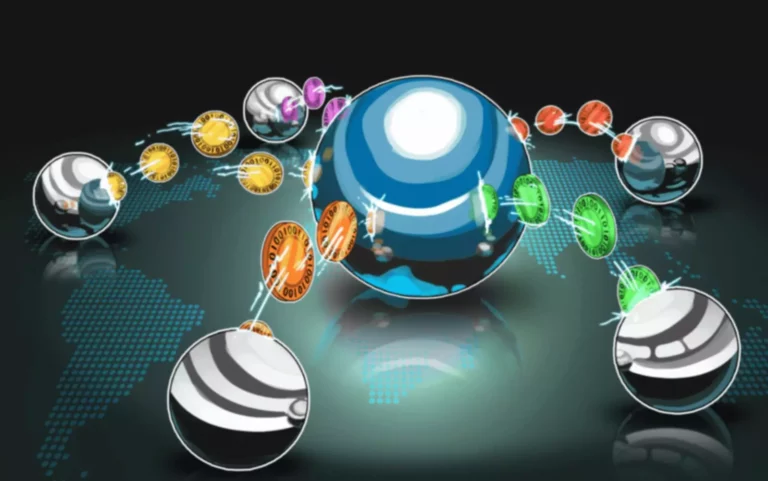A distributed ledger is the underlying concept of blockchain technology and methodologies. Moreover, the rise of decentralized finance (DeFi) and non-fungible
tokens (NFTs) has further demonstrated the potential of blockchain
technology. DeFi has created new opportunities for decentralized
lending, borrowing, and trading, while NFTs have revolutionized
digital ownership and provenance. But medical record security is not the only blockchain
trend in healthcare.
The process lifts up the level of greenhouse gas emissions significantly. The adverse environmental impact of mining was one of the main reasons for Tesla CEO Elon Musk to stop using Bitcoin as a payment tool for Tesla car purchases. A new era of blockchain professionals was born, shaping the future of this transformative technology. Small and medium enterprises, previously daunted by Blockchain’s complexities, found solace in BaaS. With the infrastructure and technical aspects handled by these tech behemoths, businesses could focus on leveraging Blockchain’s benefits. Let’s delve deeper into the significant milestones and trends that shaped this revolutionary technology during the year.
Adopting Cryptocurrencies Globally
Blockchain-powered systems record information at every stage of vaccine delivery and it’s impossible to change or delete it. This data includes times, schedules, transportation details and storage conditions, as well as information about the manufacturer and the recipient government agency. Before diving into each blockchain trend, let’s look at facts and statistics showing blockchain growth. AML (anti-money laundering) and KYC (know your customer) are two more regulatory areas where blockchain might play a significant role. As part of the onboarding procedure for new customers, financial firms must accomplish several jobs and stages. Blockchain would serve as a proof-of-process, allowing authorities to be confident in the information’s integrity.

One property doesn’t need to be sold as a whole but can be divided into multiple tokens. The issuer can offer these tokens at a lower price, which opens up investment opportunities for a larger number of people and makes typically illiquid assets more attractive. Planet Compliance is a B2B media site and directory focused on covering business regulations and highlighting the top compliance software applications. The Swedish national land survey is now developing a blockchain-powered solution for registering and documenting land ownership, which would be seeking to digitize real estate procedures using blockchain technology.
This was already playing out in early January as CyberX, a digital asset trading company, secured $15 million in funding with the goal of integrating DeFi protocols into its network and strengthening its infrastructure. In this report, we’ll share the biggest trends in the crypto space happening right now (in 2023). This blockchain ecosystem consists of parachains (individual networks) and a central hub called the Relay Chain. This is a layer-2 protocol and dApp network that integrates Ethereum and Bitcoin sidechains to facilitate interaction between the Echo, Bitcoin, and Ethereum platforms. With these sidechains, you can use ETH, BTC, and ERC-20 tokens in the Echo blockchain and easily transfer them between networks.
Top 8 Blockchain Tech Trends in 2022
Another potential use case of NFTs which finds a place among blockchain predictions for 2022 refers to NFTs in gaming. The applications of NFTs in gaming have been explicitly evident in popular play-to-earn games such as Axie Infinity. The NFT games allow players to ‘minting’ their own NFT creatures, known as Axies, and send them into competitions. With around 300,000 active players on Axie Infinity, it truly shows how NFTs can be more than just digital art. You might also want to know that unemployed people during the pandemic in Philippines used Axie Infinity for trading NFTs and earning income for daily expenses.

BaaS is currently utilized by established businesses of various sizes as well as startups. Business blockchains are being used today to help reinvent how transactions are managed. They can take time and costs out of almost any process, enabling near real-time operations. And they deliver a high degree of accuracy and control, with much less risk than many alternatives.
Permissioned Blockchain Will Dominate
Following are the famous trajectories of the system that will become widespread in times ahead. This will facilitate companies in reaching their goals timely and strengthening their relationship with clients. The concept of Central Bank Digital Currency (CBDC) was proposed a decade ago. But, as often happens with cool inventions, real fame only came to CBDC a while later. In 2021, the platform plans to introduce sharing, which would allow for increasing the scalability of the platform. Further upgrades will include the introduction of Verkle trees to optimize data storage and alleviation of network congestion by purging superfluous data.
China is currently testing a digital yuan, called e-CNY, and so far it’s been used in transactions totaling $13.9 billion. There is hope that this type of currency would offer the benefits of crypto without the risk. In 2022, President Biden released an executive order and a proposed framework for regulating cryptocurrency. So far, the US government has very few laws and regulations surrounding cryptocurrency. In the wake of the FTX implosion, regulatory scrutiny of the crypto market is at an all-time high. Crypto experts say this consolidation of the market will continue in the coming years.
- You will soon see it emerging in the market of blockchain at an even greater pace.
- Users can conduct machine-to-machine transactions using a mix of IoT and blockchain in sophisticated digital payment systems.
- Financial watchdogs are taking necessary steps to chalk out a unified regulatory setup for managing, controlling, and operating virtual currencies, crypto exchanges, and related firms.
- Cryptocurrencies will expand DeFi by offering enhanced scalability and safety to users.
- On the other, prices can fall dramatically and you can lose a lot of money.
For example, spending on blockchain in health care is expected to rise to $5.61 billion by 2025. The industry has a staggering CAGR rate of over 69% between 2019 to 2025. Blockchain is no longer only relevant to cryptocurrency, either—blockchain-based applications are emerging to support many other scenarios that require decentralized data storage and accessibility.
However, every New Year brings some new changes in the blockchain landscape. Will the year 2022 bring something for blockchain growth or present new challenges? Here are some of the top trends which might make a huge impact in the world of blockchain in 2022. This naturally led to the emergence of blockchain industry trends various types of cryptocurrency, such as Bitcoin, which builds on a technology commonly known as Blockchain. To attain the desired objective, after presenting an inevitable, brief overview of Blockchain technology, the collected papers have closely been analyzed along seven key research questions.
Since climate change is an issue that future generations will also struggle with, this blockchain trend will still be relevant for many years to come. Traditionally, power grids are centralized and often don’t allow for efficient https://www.xcritical.com/ energy distribution. The use of a peer-to-peer energy blockchain system helps reduce the need for long-distance transmission and storage of electricity, as those having surplus energy can sell and move it locally.

These advancements have made
blockchain more efficient and scalable, making it even more
attractive for businesses and organizations. Softermii has all expertise and skills to apply advanced trends in blockchain technology to your product. We will demonstrate this to you using our Extobit and
Radiant projects as examples. These tokens
will also remain relevant in the future and among popular blockchain industry
trends. They’ve evolved into a means for artists to generate vast
amounts of money at auctions by providing their digital works of art in
exchange. The report sized up the market according to revenues earned by entities that offer both public and private blockchains and other blockchain services in banking and financial services.
What Is Big Data and Why You Need a Professional To Analyze It
Artists and creators can tokenize and sell their digital artwork directly to collectors, eliminating the need for intermediaries. The ownership and provenance of these digital assets can be easily verified through the blockchain, which adds value and authenticity to the NFTs. In PoS networks, power is tied to the state of each actor in the network, which can be determined or modified by a consortium.
Blockchain helps this company record the gift card
spending and the growth of its social networks. Using blockchain on social networks will help
solve inherent problems such as privacy breaches, data control, or content
authenticity. Blockchain-as-a-Service (BaaS) is a growing trend in the blockchain industry. Both the metaverse and blockchain technology have been areas of continued interest and development in recent years. The concept of the metaverse, as a virtual reality space where users can interact with each other and digital content, has gained attention from various industries and investors. Experts assume that the metaverse is still far from becoming completely functional as a digital parallel of our real world.
Therefore, many tech enthusiasts wonder about finding the top blockchain trends for the next year to identify how the technology would evolve further. Will we notice a massive ripple effect for the blockchain future in 2022 with a new technological advancement? The following discussion tries to find some reliable answers to these questions by reflecting on the top trends in blockchain for 2022. Wondering what’s there in the pocket of blockchain technology for this year? This year we will witness improved versions of security and safety protocols within the DeFi space. DApp developers will emphasize on curating products that will detect intrusions and malicious operations before they cause much damage to the core network.